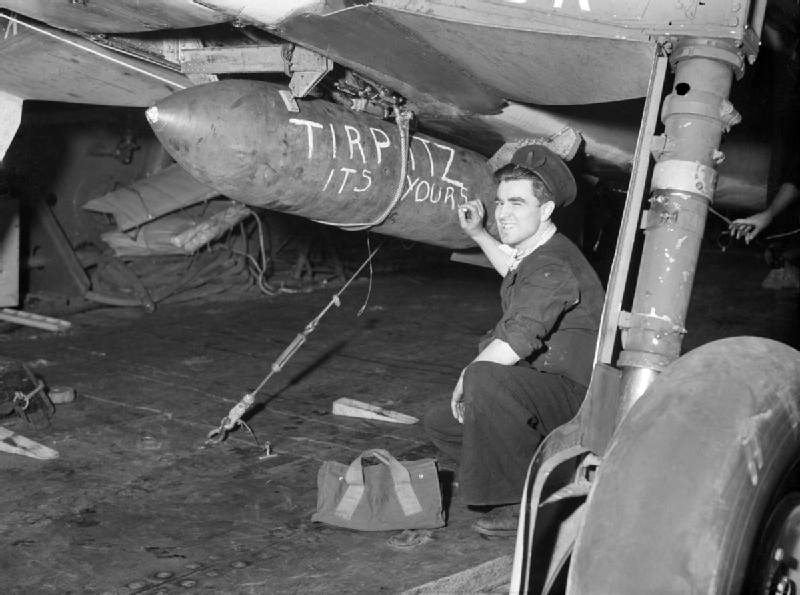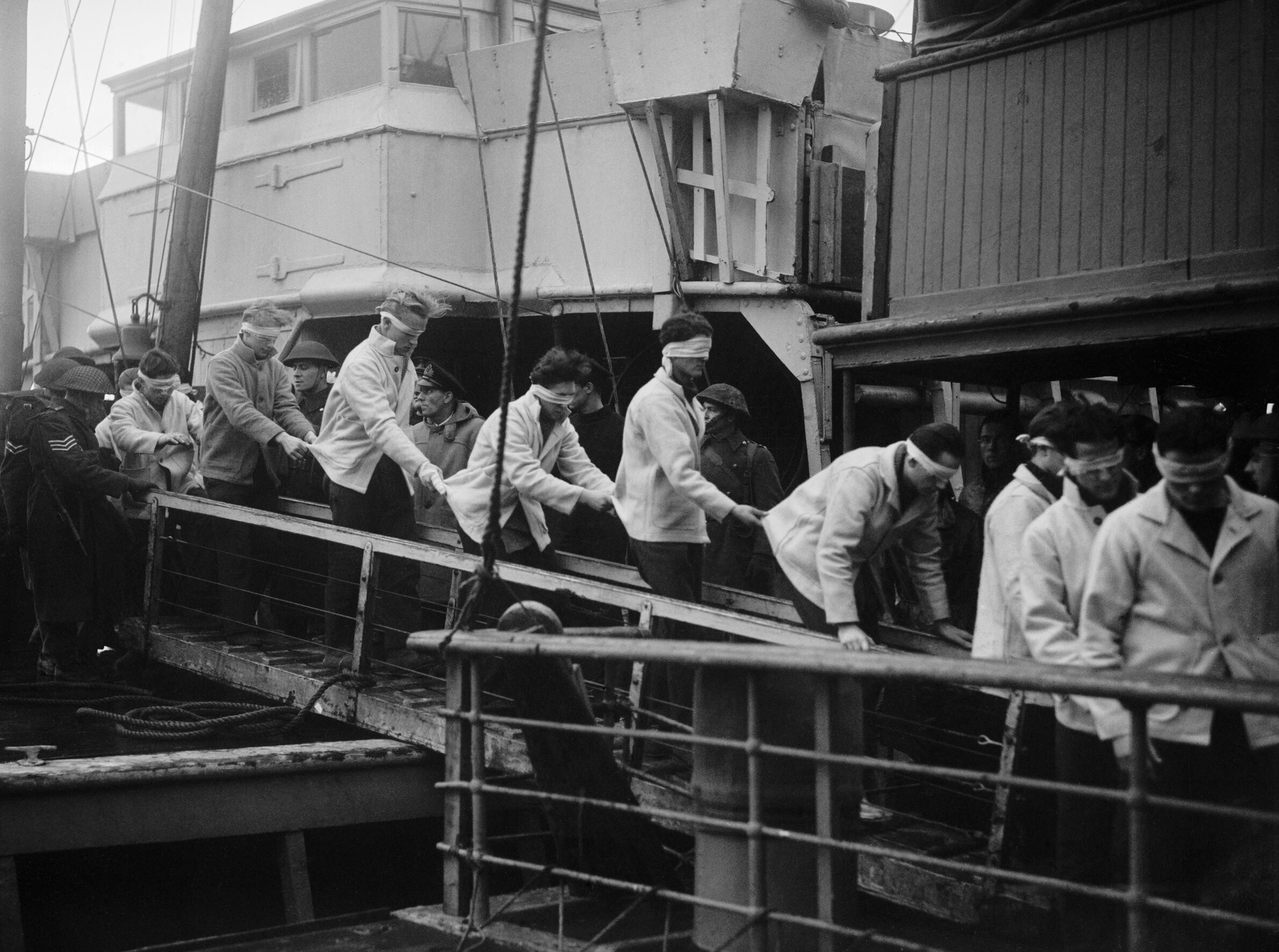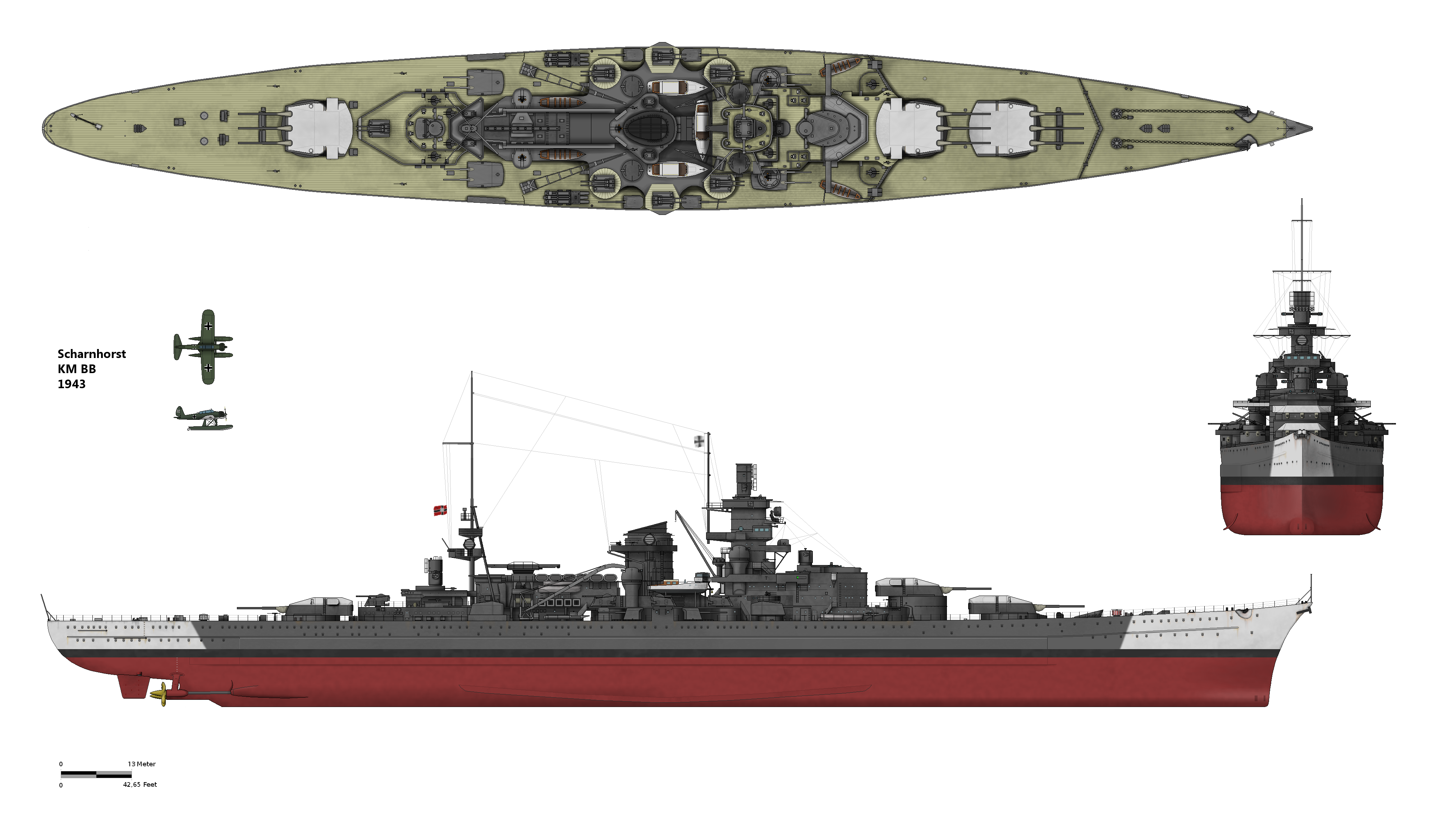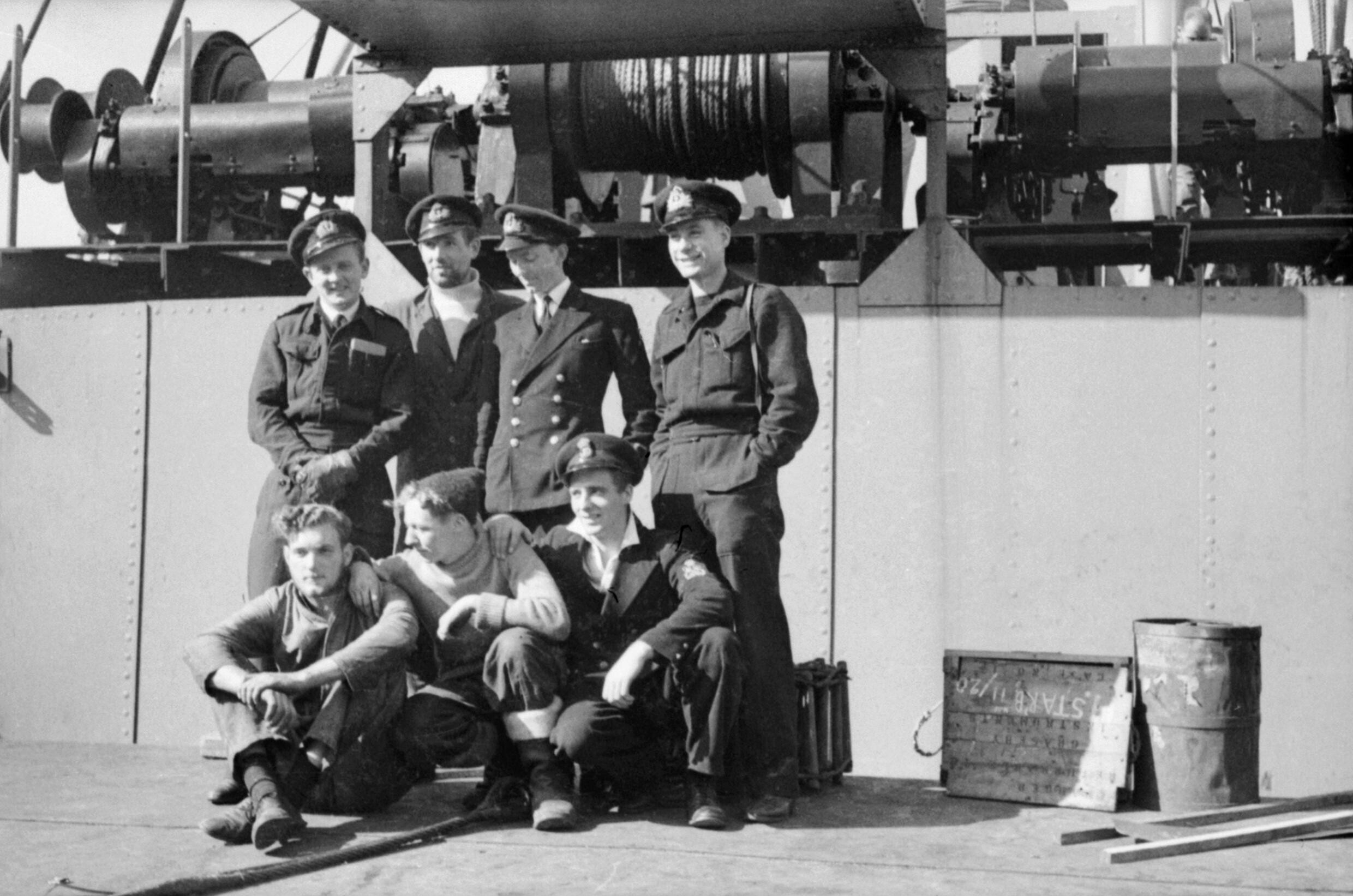|
Operation Tungsten
Operation Tungsten was a Second World War Royal Navy air raid that targeted the German battleship ''Tirpitz''. The operation sought to damage or destroy ''Tirpitz'' at her base in Kaafjord in the far north of Norway before she could become fully operational again following a period of repairs. The British decision to strike Kaafjord was motivated by fears that the battleship, upon re-entering service, would attack strategically important convoys carrying supplies to the Soviet Union. Removing the threat posed by ''Tirpitz'' would also allow the Allies to redeploy the capital ships which had to be held in the North Sea to counter her. After four months of training and preparations, the British Home Fleet sailed on 30 March 1944 and aircraft launched from five aircraft carriers struck Kaafjord on 3 April. The raid achieved surprise, and the British aircraft met little opposition. Fifteen bombs hit the battleship, and strafing by fighter aircraft inflicted heavy casualties o ... [...More Info...] [...Related Items...] OR: [Wikipedia] [Google] [Baidu] |
World War II
World War II or the Second World War, often abbreviated as WWII or WW2, was a world war that lasted from 1939 to 1945. It involved the vast majority of the world's countries—including all of the great powers—forming two opposing military alliances: the Allies and the Axis powers. World War II was a total war that directly involved more than 100 million personnel from more than 30 countries. The major participants in the war threw their entire economic, industrial, and scientific capabilities behind the war effort, blurring the distinction between civilian and military resources. Aircraft played a major role in the conflict, enabling the strategic bombing of population centres and deploying the only two nuclear weapons ever used in war. World War II was by far the deadliest conflict in human history; it resulted in 70 to 85 million fatalities, mostly among civilians. Tens of millions died due to genocides (including the Holocaust), starvation, massa ... [...More Info...] [...Related Items...] OR: [Wikipedia] [Google] [Baidu] |
List Of Allied Attacks On The German Battleship Tirpitz
The German battleship ''Tirpitz'' was attacked on multiple occasions by Allied forces during World War II. While most of the attacks failed to inflict any damage on the battleship, she was placed out of action for a lengthy period following the Operation Source midget submarine attack on 22 September 1943 and for a short period after the Operation Tungsten Operation Tungsten was a Second World War Royal Navy air raid that targeted the German battleship ''Tirpitz''. The operation sought to damage or destroy ''Tirpitz'' at her base in Kaafjord in the far north of Norway before she could become ... aircraft carrier strike on 3 April 1944. ''Tirpitz'' suffered severe and irreparable damage after being hit by a Tallboy bomb during the Operation Paravane air raid on 15 September 1944, and was sunk with heavy loss of life in the Operation Catechism raid on 12 November that year. List of attacks References ;Citations ;Works consulted * * * *{{cite book, last=Roskill, fi ... [...More Info...] [...Related Items...] OR: [Wikipedia] [Google] [Baidu] |
Fleet Carrier
A fleet carrier is an aircraft carrier designed to operate with the main fleet of a nation's navy. The term was developed during World War II, to distinguish it from the escort carrier and other less capable types. In addition to many medium-sized carriers, supercarriers, as well as some light carriers, are also classed as fleet carriers. History Aircraft carriers were designed in the years between World War I and World War II. Flight decks were installed on several different types of ships to explore the possibilities of operating naval aircraft without the performance limitations of flotation devices required for seaplanes and flying boats. The most successful of these early aircraft carriers were built from battlecruisers. Battlecruisers typically had a speed of about , which was several knots faster than the speed of contemporary battleships. Additional speed was not necessary for maintaining station with the battle fleet, but enabled the carrier to catch up with the b ... [...More Info...] [...Related Items...] OR: [Wikipedia] [Google] [Baidu] |
Heavy Bomber
Heavy bombers are bomber aircraft capable of delivering the largest payload of air-to-ground weaponry (usually bombs) and longest range (takeoff to landing) of their era. Archetypal heavy bombers have therefore usually been among the largest and most powerful military aircraft at any point in time. In the second half of the 20th century, heavy bombers were largely superseded by strategic bombers, which were often smaller in size, but had much longer ranges and were capable of delivering nuclear bombs. Because of advances in aircraft design and engineering — especially in powerplants and aerodynamics — the size of payloads carried by heavy bombers has increased at rates greater than increases in the size of their airframes. The largest bombers of World War I, the four engine aircraft built by the Sikorsky company in the Soviet Union, could carry a payload of up to of bombs. By the middle of World War II even a single-engine fighter-bomber could carry a bomb load, an ... [...More Info...] [...Related Items...] OR: [Wikipedia] [Google] [Baidu] |
Sir Arthur Harris, 1st Baronet
Marshal of the Royal Air Force Sir Arthur Travers Harris, 1st Baronet, (13 April 1892 – 5 April 1984), commonly known as "Bomber" Harris by the press and often within the RAF as "Butch" Harris, was Air Officer Commanding-in-Chief (AOC-in-C) RAF Bomber Command during the height of the Anglo-American strategic bombing campaign against Nazi Germany in the Second World War. Born in Gloucestershire, Harris emigrated to Rhodesia in 1910, aged 17. He joined the 1st Rhodesia Regiment at the outbreak of the First World War and saw action in South Africa and South West Africa. In 1915, Harris returned to England to fight in the European theatre of the war. He joined the Royal Flying Corps, with which he remained until the formation of the Royal Air Force in 1918. Harris remained in the Air Force through the 1920s and 1930s, serving in India, Mesopotamia, Persia, Egypt, Palestine, and elsewhere. At the outbreak of the Second World War in 1939, Harris took command of No. 5 Group RA ... [...More Info...] [...Related Items...] OR: [Wikipedia] [Google] [Baidu] |
RAF Bomber Command
RAF Bomber Command controlled the Royal Air Force's bomber forces from 1936 to 1968. Along with the United States Army Air Forces, it played the central role in the strategic bombing of Germany in World War II. From 1942 onward, the British bombing campaign against Germany became less restrictive and increasingly targeted industrial sites and the civilian manpower base essential for German war production. In total 364,514 operational sorties were flown, 1,030,500 tons of bombs were dropped and 8,325 aircraft lost in action. Bomber Command crews also suffered a high casualty rate: 55,573 were killed out of a total of 125,000 aircrew, a 44.4% death rate. A further 8,403 men were wounded in action, and 9,838 became prisoners of war. Bomber Command stood at the peak of its post-war military power in the 1960s, the V bombers holding the United Kingdom's nuclear deterrent and a supplemental force of Canberra light bombers. In August 2006, a memorial was unveiled at Lincoln Cathed ... [...More Info...] [...Related Items...] OR: [Wikipedia] [Google] [Baidu] |
The Royal Navy During The Second World War A22634
''The'' () is a grammatical article in English, denoting persons or things already mentioned, under discussion, implied or otherwise presumed familiar to listeners, readers, or speakers. It is the definite article in English. ''The'' is the most frequently used word in the English language; studies and analyses of texts have found it to account for seven percent of all printed English-language words. It is derived from gendered articles in Old English which combined in Middle English and now has a single form used with pronouns of any gender. The word can be used with both singular and plural nouns, and with a noun that starts with any letter. This is different from many other languages, which have different forms of the definite article for different genders or numbers. Pronunciation In most dialects, "the" is pronounced as (with the voiced dental fricative followed by a schwa) when followed by a consonant sound, and as (homophone of pronoun '' thee'') when followed by a ... [...More Info...] [...Related Items...] OR: [Wikipedia] [Google] [Baidu] |
Operation Overlord
Operation Overlord was the codename for the Battle of Normandy, the Allied operation that launched the successful invasion of German-occupied Western Europe during World War II. The operation was launched on 6 June 1944 (D-Day) with the Normandy landings. A 1,200-plane airborne assault preceded an amphibious assault involving more than 5,000 vessels. Nearly 160,000 troops crossed the English Channel on 6 June, and more than two million Allied troops were in France by the end of August. The decision to undertake a cross-channel invasion in 1944 was taken at the Trident Conference in Washington in May 1943. General Dwight D. Eisenhower was appointed commander of Supreme Headquarters Allied Expeditionary Force, and General Bernard Montgomery was named commander of the 21st Army Group, which comprised all the land forces involved in the invasion. The coast of Normandy of northwestern France was chosen as the site of the invasion, with the Americans assigned to land at sectors ... [...More Info...] [...Related Items...] OR: [Wikipedia] [Google] [Baidu] |
Battle Of The North Cape
The Battle of the North Cape was a Second World War naval battle that occurred on 26 December 1943, as part of the Arctic campaign. The , on an operation to attack Arctic Convoys of war materiel from the Western Allies to the Soviet Union, was brought to battle and sunk by the Royal Navy's battleship with cruisers and destroyers, including an onslaught from the destroyer of the exiled Royal Norwegian Navy, off the North Cape, Norway. The battle was the last between big-gun capital ships in the war between Britain and Germany. The British victory confirmed the massive strategic advantage held by the British, at least in surface units. It was also the penultimate engagement between battleships, the last being the October 1944 Battle of Surigao Strait. Background Since August 1941, the western Allies had run convoys of ships from the United Kingdom and Iceland to the northern ports of the Soviet Union to provide essential supplies for their war effort on the Eastern Front. T ... [...More Info...] [...Related Items...] OR: [Wikipedia] [Google] [Baidu] |
German Battleship Scharnhorst
''Scharnhorst'' was a German capital ship, alternatively described as a battleship or battlecruiser, of Nazi Germany's '' Kriegsmarine''. She was the lead ship of her class, which included her sister ship . The ship was built at the ''Kriegsmarinewerft'' dockyard in Wilhelmshaven; she was laid down on 15 June 1935 and launched a year and four months later on 3 October 1936. Completed in January 1939, the ship was armed with a main battery of nine 28 cm (11 in) C/34 guns in three triple turrets. Plans to replace these weapons with six 38 cm (15 in) SK C/34 guns in twin turrets were never carried out. ''Scharnhorst'' and ''Gneisenau'' operated together for much of the early portion of World War II, including sorties into the Atlantic to raid British merchant shipping. During her first operation, ''Scharnhorst'' sank the armed merchant in a short engagement (November 1939). ''Scharnhorst'' and ''Gneisenau'' participated in Operation Weserübung (April� ... [...More Info...] [...Related Items...] OR: [Wikipedia] [Google] [Baidu] |
Operation Source
Operation Source was a series of attacks to neutralise the heavy German warships – ''Tirpitz'', ''Scharnhorst'' and ''Lützow'' – based in northern Norway, using X-class midget submarines. The attacks took place in September 1943 at Kaafjord and succeeded in keeping ''Tirpitz'' out of action for at least six months. The concept for the attack was developed by Commander Cromwell-Varley, with support of Max Horton, Flag Officer Submarines, and Prime Minister Winston Churchill. The operation was directed from HMS ''Varbel'', located in Port Bannatyne on the Isle of Bute. ''Varbel'' (named after Commanders Varley and Bell, designers of the X-Craft prototype) was the on-shore headquarters for the 12th Submarine Flotilla (midget submarines). It had been a luxury 88-bedroom hotel (the Kyles Hydropathic Hotel) requisitioned by the Admiralty to serve as the flotilla’s headquarters. All X-craft training and preparation for X-craft attacks (including that on ''Tirpitz'') was ... [...More Info...] [...Related Items...] OR: [Wikipedia] [Google] [Baidu] |
X-class Submarine
The X class was a World War II midget submarine class built for the Royal Navy during 1943–44. It was substantially larger than the original Chariot manned torpedo. Known individually as X-Craft, the vessels were designed to be towed to their intended area of operations by a full-size "mother" submarine – usually one of the T class or S class – with a passage crew on board, the operational crew being transferred from the towing submarine to the X-Craft by dinghy when the operational area was reached, and the passage crew returning with the dinghy to the towing submarine. Once the attack was over, the X-Craft would rendezvous with the towing submarine and then be towed home. Range was limited primarily by the endurance and determination of their crews, but was thought to be up to 14 days in the craft or 1,200 miles (1931 km) distance after suitable training. Actual range of the X-Craft itself was surfaced and at submerged. Specification The craft was about lon ... [...More Info...] [...Related Items...] OR: [Wikipedia] [Google] [Baidu] |


.jpg)



.png)




